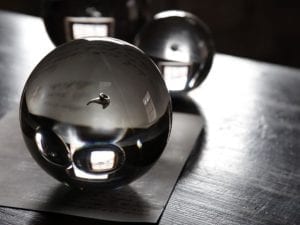“I think it’s a little different in the U.S., but in Europe it was not so easy as a female artist to make people laugh. It was more about trying to survive at all.” Judith Hopf (1969, Karlsruhe, Germania).
At Museion, Bolzano, in the very North of Italy, the German artist just opened her first solo show in an Italian museum, titled Up. Judith Hopf’s works at Museion are characterised by the way they point the viewer in certain directions but without being prescriptive. Instead, there is a marked critical and productive awareness of uniformities propagated within society: Hopf questions their ostensible necessity and transforms them into alternative opinions. In the artist’s view, these everyday observations are closely interwoven with social and political power structures which she aims to render visible. The main topic is her profound scepticism towards all forms of homogenisation and the forgetting that accompanies it.
Usually, she sees social pressure regarding different life forms that disturb the public consensus and which, accordingly, are excluded or made invisible. With a generous dose of humour, she points to the eeriness of situations where an unknown variant breaks unexpectedly into a supposedly regular routine. In this case, she plays in particular with notions of expectation and knowledge: the setting includes and develops a dialogue with the venue and surrounding landscape. The relationship with the South Tyrol landscape can also be seen on the invitation for the exhibition, designed by the artist herself.
Arms formed of clay on the wall stretching out toward the visitors, bricklike feet running toward them, sculptures standing like skeletal bodies in the room. Hopf’s recent works continue the mixture of alternating geometric abstraction and figuration, object and subject, that is familiar from the genre of comics, and which is also recognizable in her Waiting Laptops and Exhausted Vases: apparatuses and objects with psychological quirks that remind us of ourselves and hence of the question of why we see and feel that which we see and feel, and how we see and feel it.
“The bricks used”, affirmed Judith Hopf in conversation with Sabeth Buchmann, “were all originally made of clay, of course, but they were industrially produced and hence are a standardized size. Any attempt to make a perfect, geometric form, such as a cuboid, from clay by hand will probably fail. By contrast, the effort to make regular bricks of clay and to make or fire them using technology has been a cultural challenge since time immemorial. It seems we have solved that, at least, today: bricks are technically perfect. They form a regular, repeating pattern when they are laid, and, in the service of architectural requirements (if one has learned the skilled craft of masonry) they form perfect lines and flat surfaces. From an artistic perspective, these contemporary bricks, with their rigid appearance, also have an inherent Donald Judd–like quality. As so often, my sculptures struggle through my fascination for modernity, through the gullies of minimalist art and systems of reference in order to pin their aesthetic experiments with “emptying” to something new or different: for example, the arms hanging down, the non-functioning wheels and parts of a trolley that are produced, just like the hands and arms jutting out of the wall, by pressing clay together.”
Up starts in the Passage area with the video Lily’s Laptop (2013), which reveals the artist’s interest in all forms of subversion and the complexity of youth: an au pair girl, left at home alone and not allowed to use the computer, takes revenge by flooding the apartment. The background for the video is another work by the artist on the wall of the Passage area, emblematically entitled Rain. A stylised shower of hard black drops painted in tempera playfully accompanies the images of the flood shown on the screen. Limits and social exclusion are the focus of one of the artist’s best known videos, Some End of Things: The Conception of Youth (2011), which will be on show in a marquee structure created for the occasion on the fourth floor. In the work a man in an egg costume walks around a modernist steel and glass building, but cannot get through the door without breaking his shell.
In Museion’s opened spaces, the video is screened in a circular structure, Husse 2 (2016), created for the occasion on the fourth floor. The fabric used to realize the structure reflects the artist’s preference for simple materials and recalls the brick motif which characterises recent sculptures and elements of the exhibition design. As well as previous films, the exhibition also presents a new work, UP! (2016). This video animation, produced in collaboration with Martin Ebner, shows an SUV tilting and swaying on a mountain road. The instability of this powerful modern vehicle is not just physical, but also metaphorical, raising questions on the actual solidity of objects that are viewed as status symbols.
Ginevra Bria
Judith Hopf: Up runs at Museion, Bolzano, until 8 January. For more information: www.museion.it
Credits:
1. Judith Hopf, Up, exhibition view at Museion, Bolzano. Foto Luca Meneghel © the artist; courtesy of kaufmann repetto, Milan/New York; and Deborah Schamoni, Munich.





